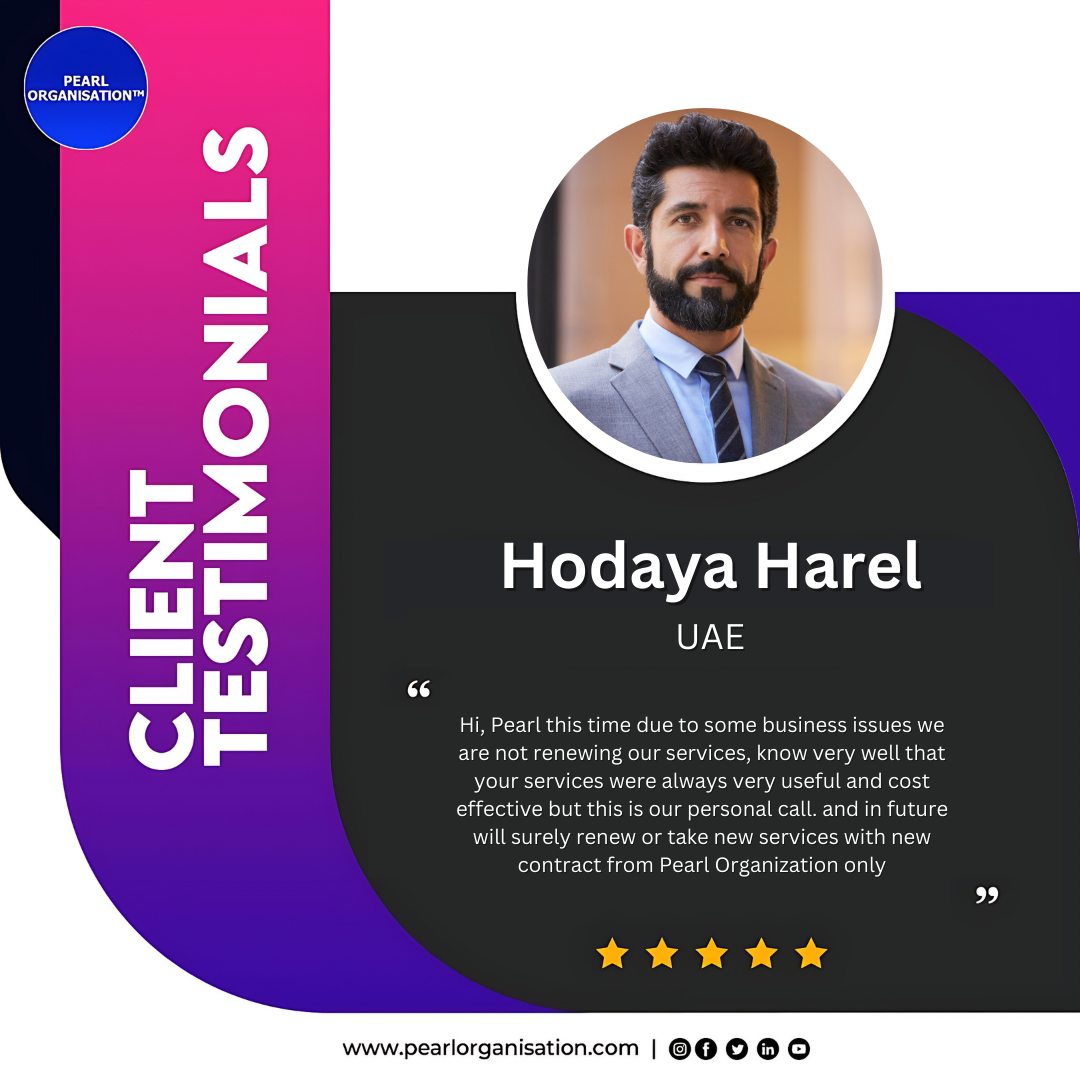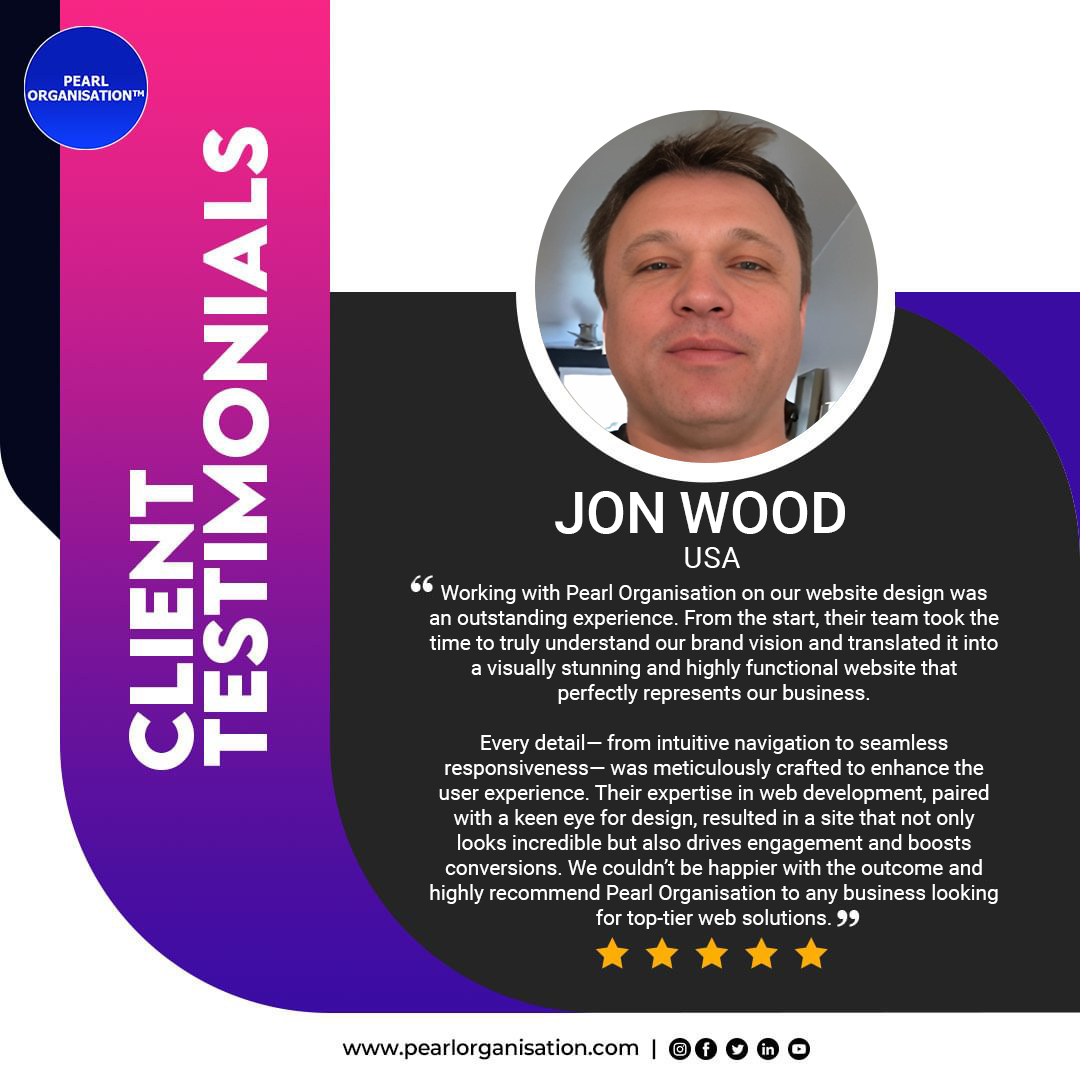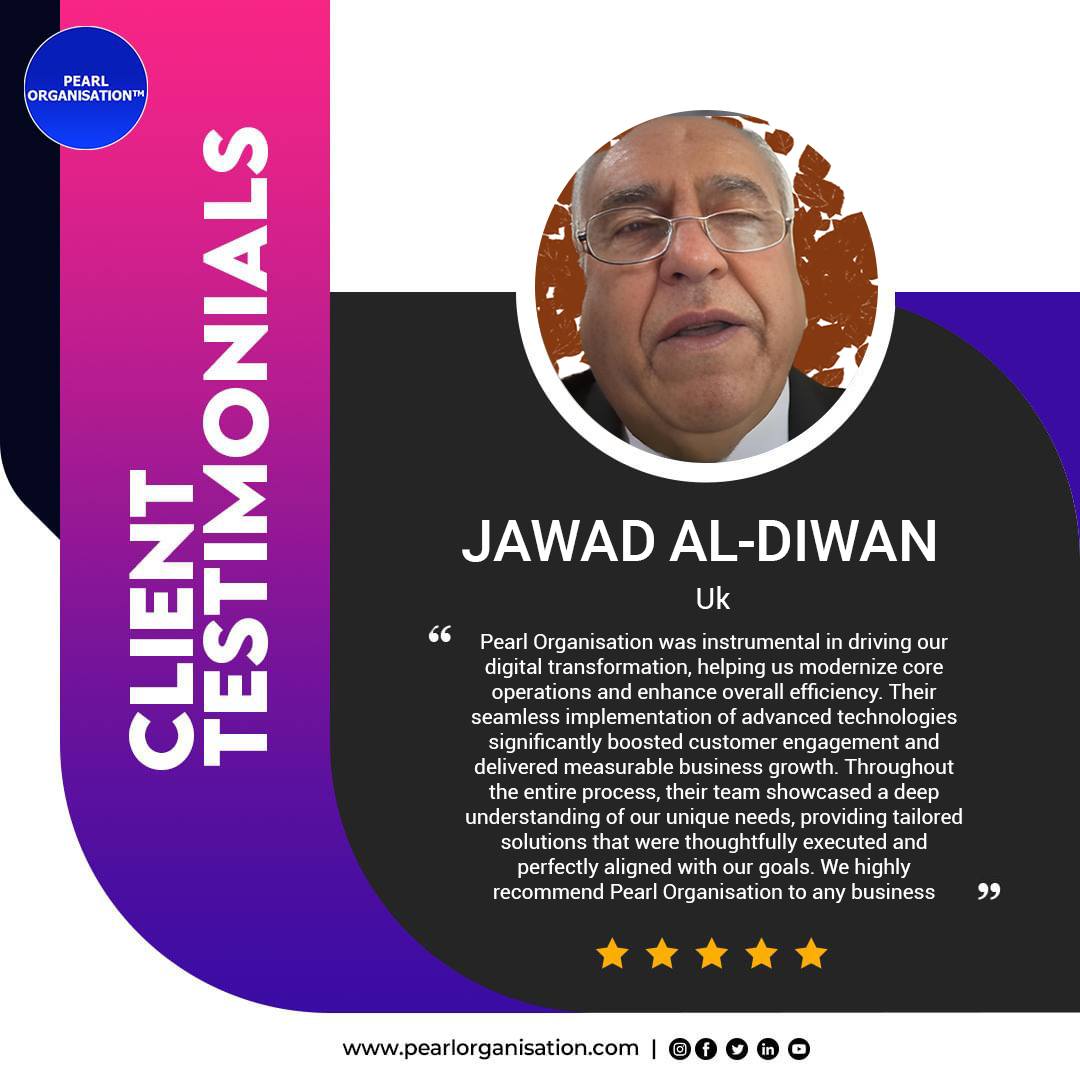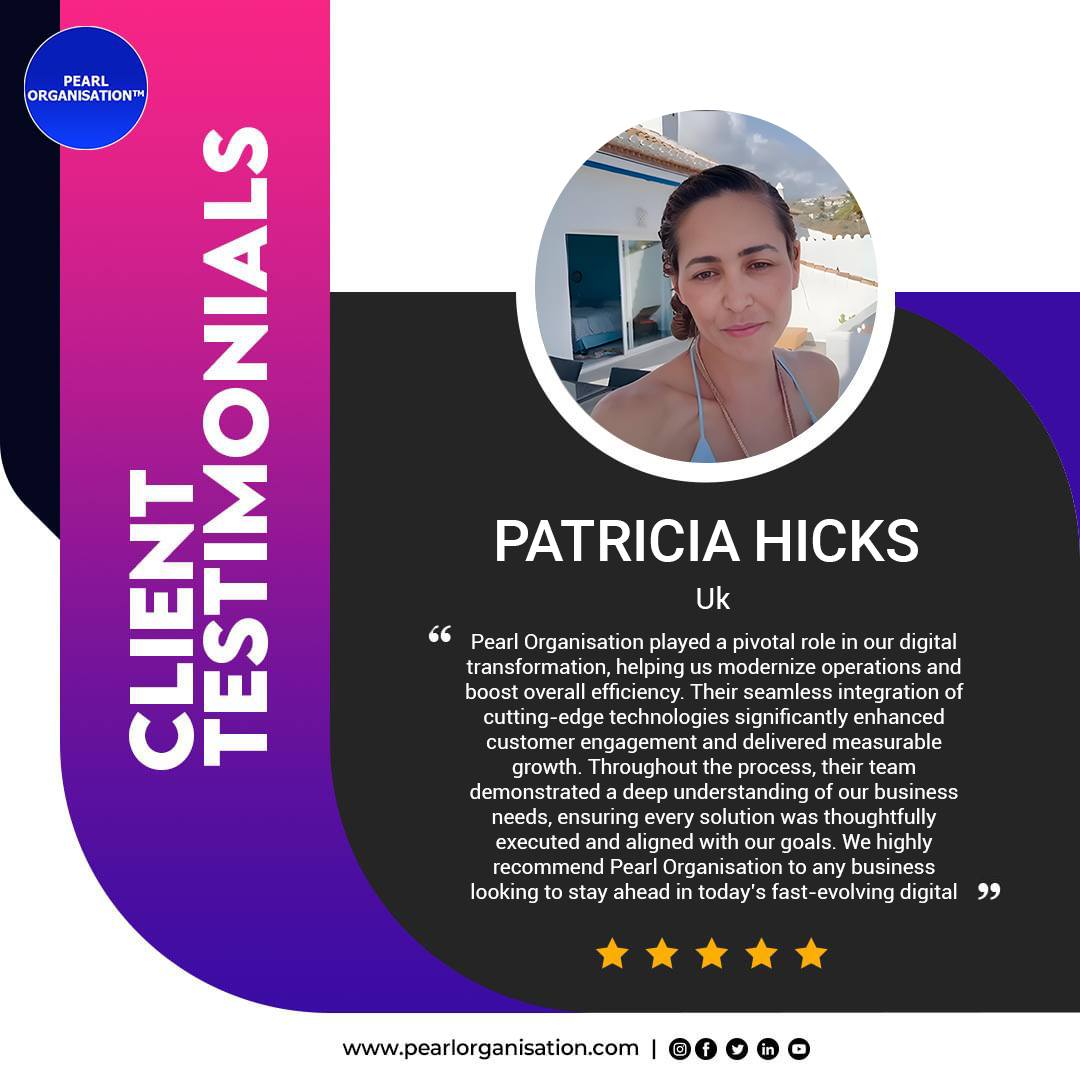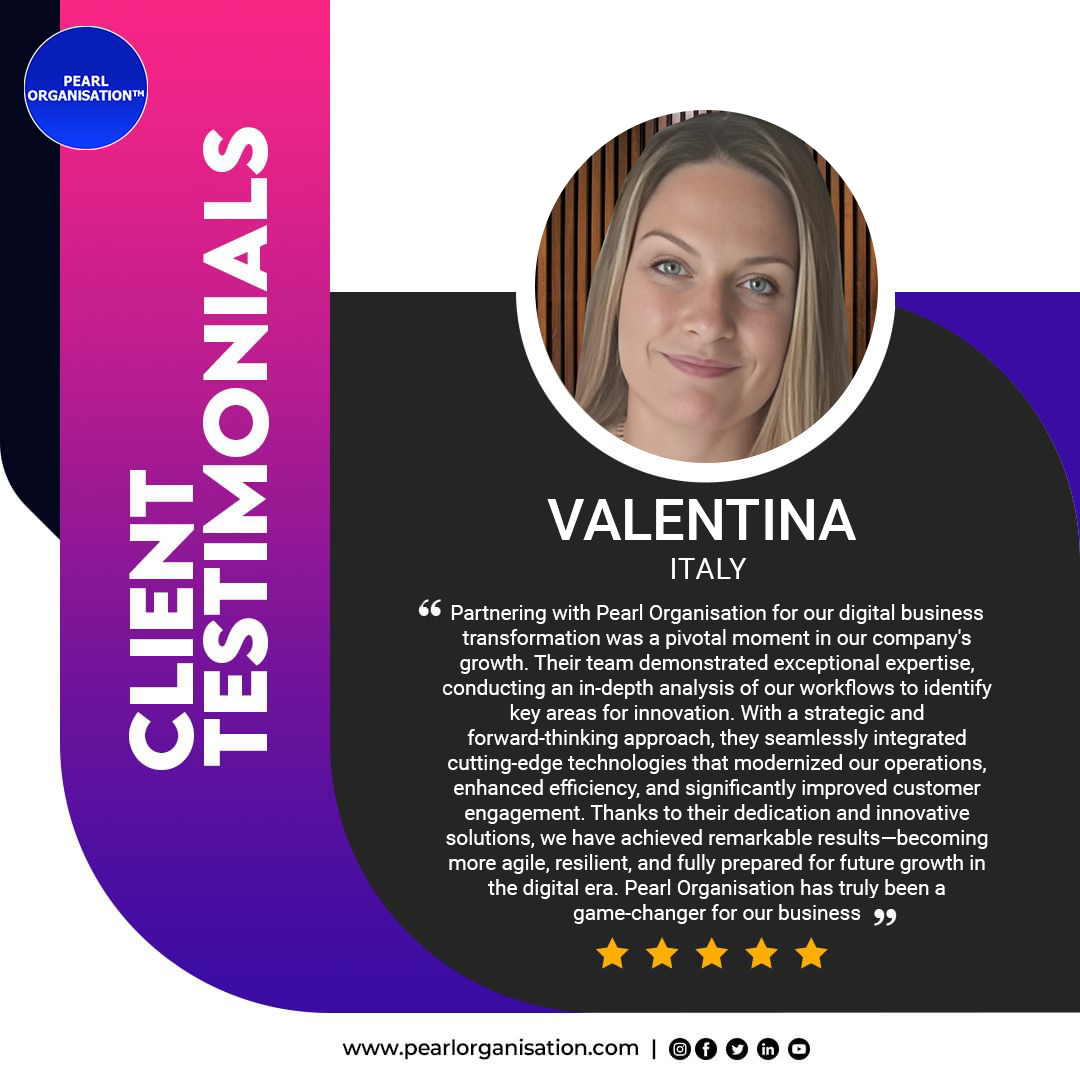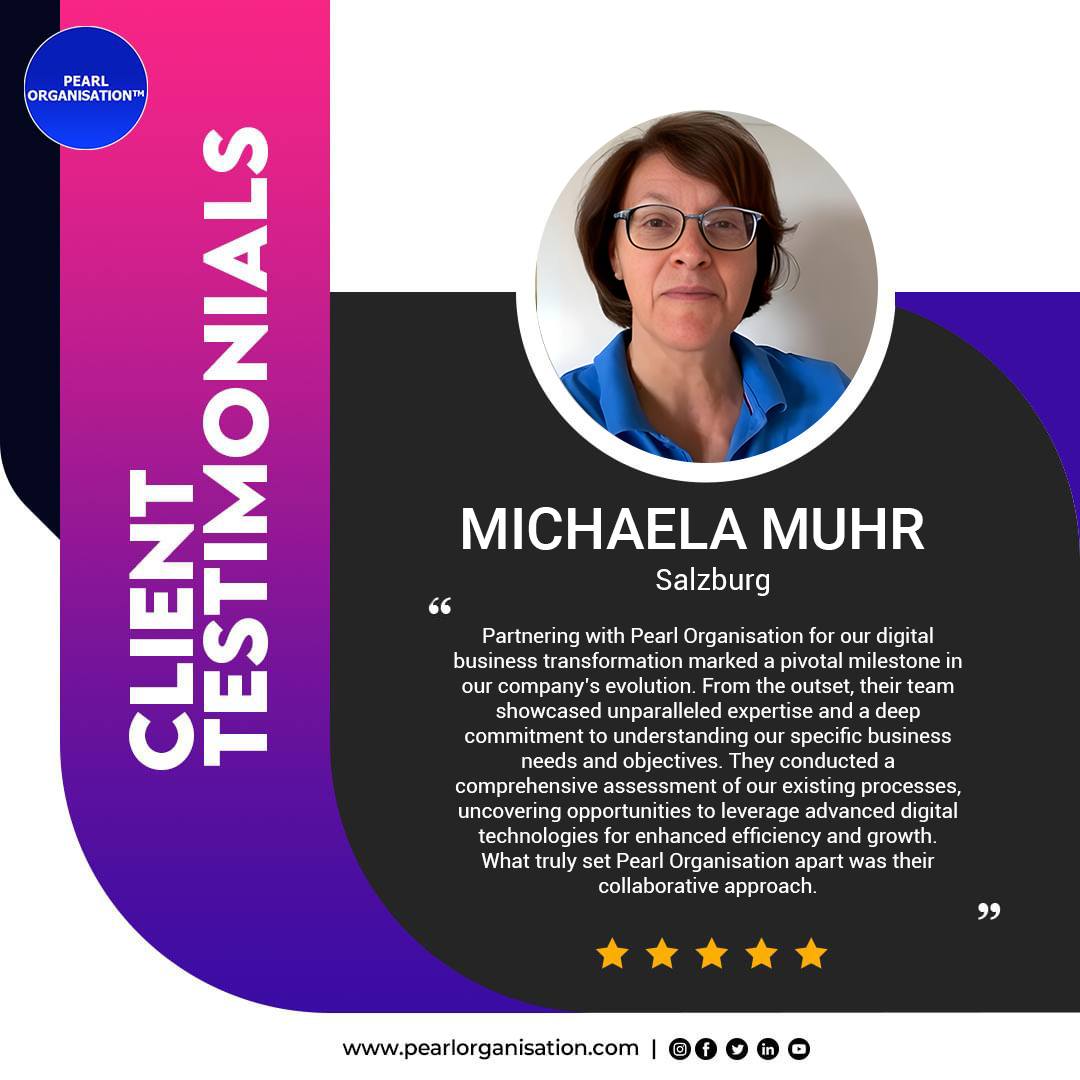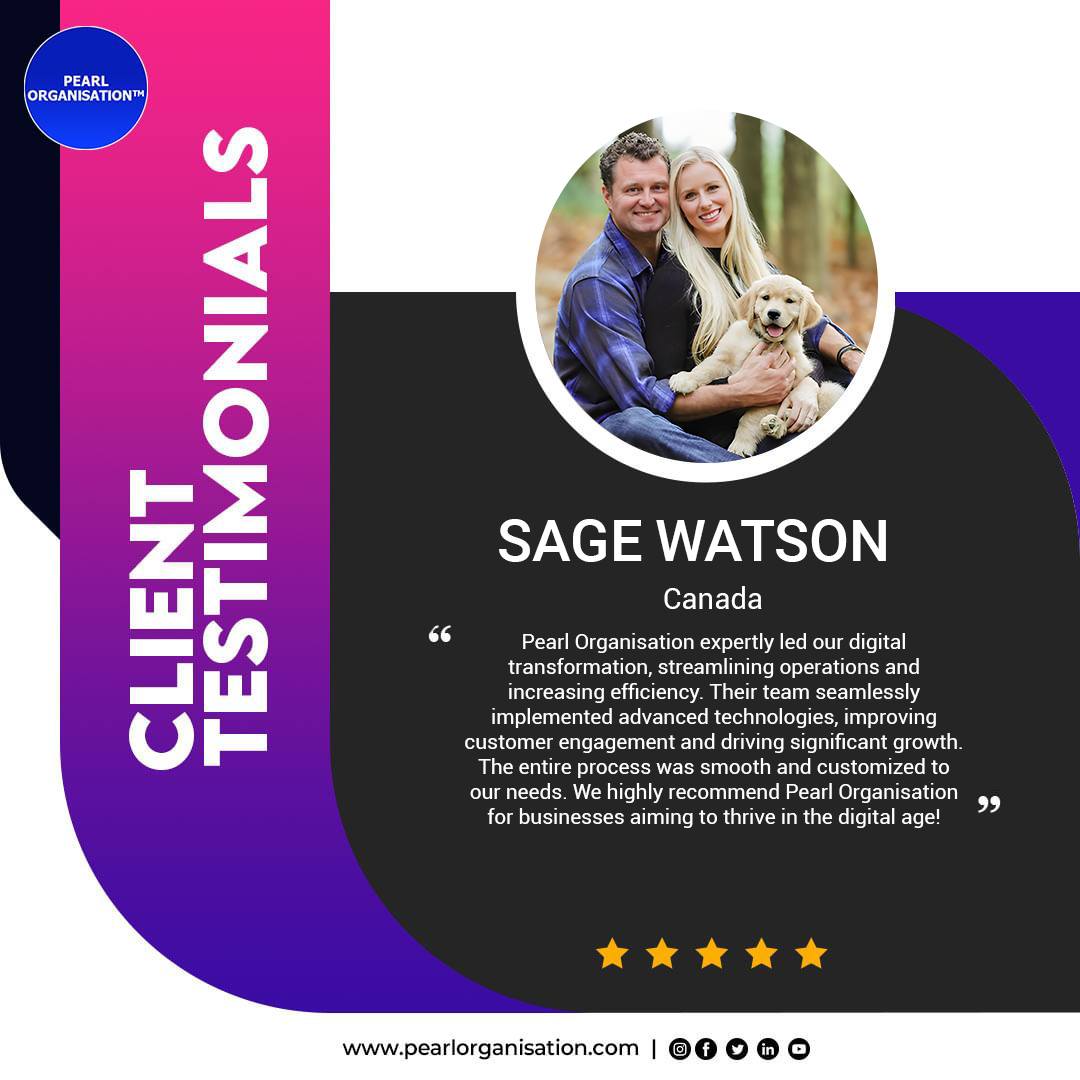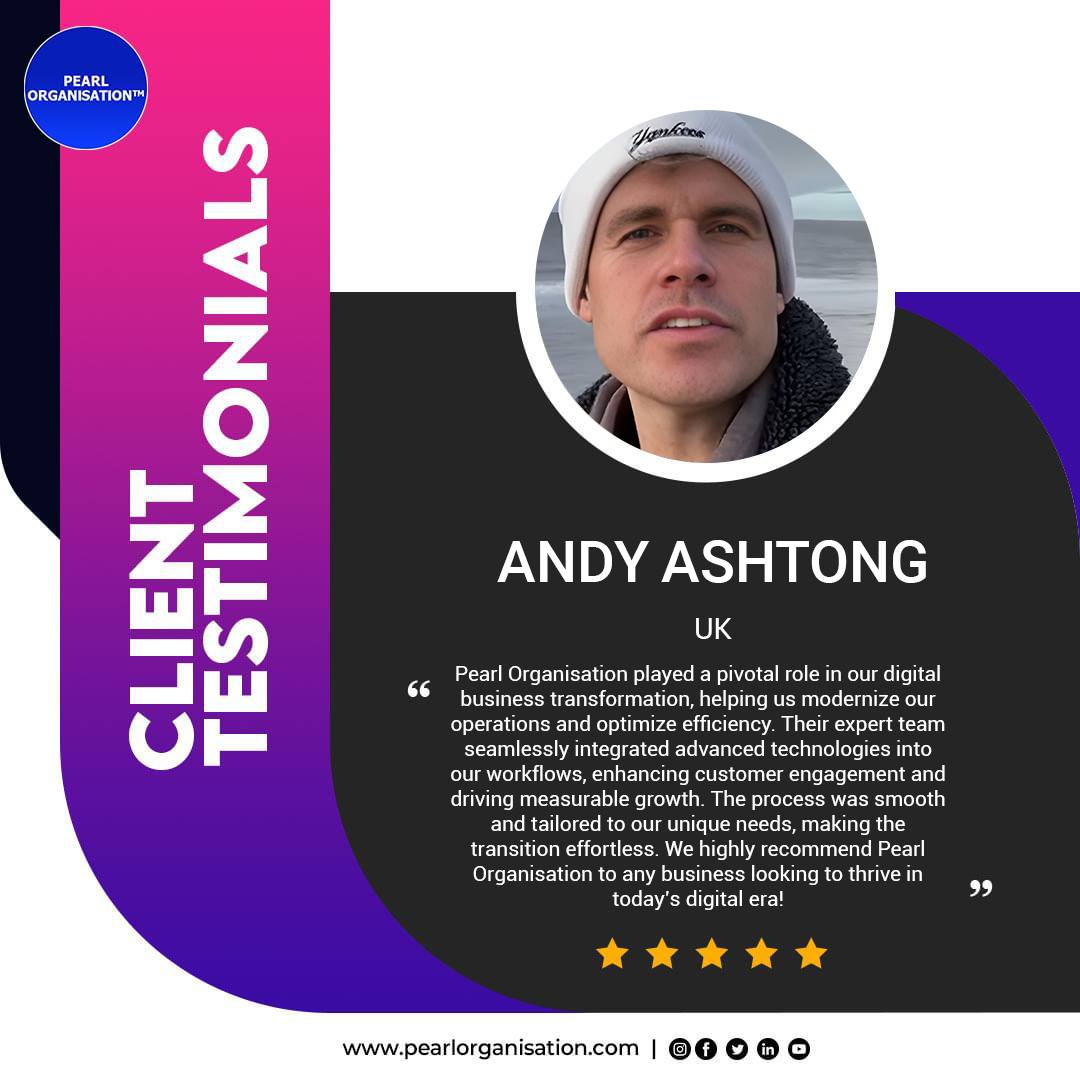How Tech-Driven Process Automation Reduces Human Bottlenecks
- Larrisa

- Jul 22
- 8 min read
Pearl Organisation’s Digital Process Automation Strategies That Deliver Speed, Accuracy, and Scalability

Introduction: The Human Bottleneck Dilemma in Modern Enterprises
Every growing business eventually encounters it — the productivity ceiling caused by human limitations. Whether it’s delays in data entry, miscommunication across departments, or manual approval backlogs, human-driven processes often introduce friction that slows growth, reduces quality, and increases operational costs.
Enter Tech-Driven Process Automation — the strategic use of technology to streamline, digitize, and optimize workflows with minimal human intervention. At Pearl Organisation, we specialize in Digital Process Automation (DPA) solutions that go beyond basic task automation — we build intelligent, connected systems that eliminate inefficiencies and empower humans to focus on what truly matters: innovation, strategy, and value creation.
Understanding Digital Process Automation (DPA)
Digital Process Automation is the evolution of Business Process Management (BPM) and Robotic Process Automation (RPA). It involves the use of AI, APIs, low-code platforms, and workflow orchestration to automate repetitive, rules-based, and decision-driven processes across the enterprise.
At its core, DPA combines:
While RPA focuses on mimicking human tasks, DPA builds scalable systems where humans only intervene when necessary.
Where Human Bottlenecks Arise in Traditional Workflows
Even the most capable teams suffer when overwhelmed with repetitive or manual tasks. Common bottlenecks include:
🔄 Manual Data Entry
Employees spend hours re-entering the same data across systems (CRM, ERP, invoicing tools), leading to errors and inefficiency.
🕑 Approval Delays
Approvals for invoices, leave, procurement, and policy changes often get stuck in inboxes, delaying critical business functions.
📊 Siloed Information
Disconnected systems prevent real-time decision-making due to poor data visibility and inconsistent records.
🧩 Complex Hand-Offs
Processes involving multiple teams (e.g., sales-to-finance or HR-to-payroll) suffer from missed steps and lack of accountability.
🔍 Compliance & Audit Challenges
Manual logs and document handling increase risks of non-compliance, especially in industries governed by regulations (e.g., healthcare, finance, manufacturing).
Pearl Organisation’s Tech-Driven Process Automation Approach
Our DPA strategy is rooted in deep process understanding + smart technology deployment. Every automation we design is:
Human-centered
Outcome-driven
Secure and compliant
Integrated across systems
Built to scale and adapt
Step-by-Step Automation Lifecycle:
1. Discovery & Process Mapping
We begin by identifying friction points and inefficiencies through stakeholder workshops, process mining tools, and value stream mapping.
2. Automation Blueprint Design
We architect intelligent workflows using tools like Camunda, Power Automate, Zapier, or custom Laravel/Node.js workflows, outlining how data flows, decisions are made, and triggers are initiated.
3. Integration with Enterprise Systems
We connect your CRM, ERP, HRMS, invoicing platforms, chat systems, and databases via secure APIs or RPA bridges to enable seamless data exchange.
4. Rule-Based & AI-Driven Automation
For simple flows, we use conditional logic. For complex flows, we embed AI/ML models (e.g., NLP for document parsing, AI for fraud detection, or prediction engines for demand forecasting).
5. Testing, Validation & User Training
Each workflow is sandbox-tested for accuracy, exceptions, rollback readiness, and then launched with user onboarding sessions.
6. Monitoring & Optimization
Our dashboards track every task, exception, turnaround time (TAT), and success rate — enabling continuous improvement.
Real Use Cases Where Automation Reduces Human Bottlenecks
✅ HR Onboarding Automation
Instead of HR manually sending forms, configuring user accounts, and collecting documents:
Applicant submits once → triggers automated background check
System creates employee ID → auto-provisions email, payroll, and training modules
All approvals done via Slack or email with one-click
Result: Onboarding time reduced from 5 days to 1 hour.
✅ Accounts Payable Automation
Manual invoice approval once took 7–10 days due to multiple approvers:
Now invoices are scanned with OCR
Matched against PO and pushed to approval hierarchy
Auto-scheduled for payment based on vendor contract
Result: 80% reduction in late payments and human errors.
✅ Sales to Delivery Handoff
Earlier, miscommunication caused delays in project execution:
Automated trigger sends handoff package from sales to delivery
Client data, scope, budget, and timeline auto-filled in project system
Internal teams alerted and assigned via automated calendar invites
Result: Zero delays, 100% documentation compliance.
Platforms & Technologies We Use at Pearl Organisation
Automation Category | Tools & Frameworks |
Low-Code / No-Code | Microsoft Power Automate, Appian, Zoho Flow |
Workflow Engines | Camunda, n8n, Laravel Workflows, Node-RED |
AI-Driven Logic | Python AI Models, GPT APIs, Google Cloud AI |
Document Automation | DocuSign, PandaDoc, OCR using Tesseract or Azure |
RPA / Task Automation | UiPath, Automation Anywhere, Selenium |
Zapier, Integromat, AWS Lambda, RESTful APIs | |
Salesforce, Zoho, Odoo, SAP, HubSpot, Freshworks |
We tailor these tools to your tech stack — on-prem, cloud, hybrid, or SaaS.
Key Business Benefits of Process Automation
⚡ Faster Turnaround Times
Automated flows execute in seconds — not hours or days.
🎯 Accuracy and Consistency
Reduces manual entry errors and standardizes outcomes across teams.
📉 Cost Reduction
Fewer manual tasks mean reduced need for overtime, support tickets, and rework.
🛡️ Compliance and Audit Trails
Every action is timestamped and stored — helping meet GDPR, HIPAA, ISO, and industry-specific regulations.
📊 Real-Time Insights
Track metrics like average processing time, bottlenecks, and exception trends via intelligent dashboards.
🤝 Employee Empowerment
Freeing teams from repetitive tasks allows them to focus on high-value activities — innovation, customer service, and strategy.
Industries We Serve with Process Automation
Why Pearl Organisation for Digital Process Automation?
✅ Over 2790+ global clients served with workflow solutions
✅ Custom-built and off-the-shelf platform support
✅ Secure by design — GDPR, HIPAA, ISO 27001 compliant
✅ Agile execution with ROI-focused automation roadmaps
✅ End-to-end ownership — from consultation to implementation and support
We don’t just automate tasks — we reimagine how your business operates.
Final Thoughts: Unlock the Future with Intelligent Automation
Every bottleneck that slows down your business today is an opportunity for transformation. With tech-driven automation, you not only eliminate inefficiencies — you build a business that moves faster, delivers more, and scales smarter.
At Pearl Organisation, we empower you to shift from reactive workflows to proactive, self-healing systems — where speed meets intelligence and productivity becomes exponential.
🔗 Explore our full Digital Process Automation solutions:👉 https://www.pearlorganisation.com/digital-process-automation
Frequently Asked Questions (FAQs) – Digital Process Automation (DPA) by Pearl Organisation
Q1. What is Digital Process Automation (DPA) and how is it different from traditional automation?
Answer:
Digital Process Automation (DPA) refers to the strategic use of modern technologies like AI, APIs, low-code platforms, and intelligent workflows to automate not just tasks, but entire business processes across departments. Unlike traditional task automation (such as Robotic Process Automation), which focuses on individual repetitive actions, DPA provides:
End-to-end process orchestration
Real-time decisioning using AI
Dynamic workflows involving multiple systems
Scalability across global teams
Business logic integration and compliance enforcement
DPA enables cross-functional digital transformation — from sales and HR to operations and finance — reducing human bottlenecks at scale.
Q2. Which business processes benefit most from automation?
Answer:
Almost any rule-based, repetitive, or decision-based process can be automated. The most commonly automated processes across industries include:
HR: Employee onboarding, leave approvals, recruitment workflows
Finance: Invoicing, accounts payable, procurement, expense claims
Sales: Quote-to-cash, CRM sync, lead routing
Customer Support: Ticket triaging, feedback analysis, chat routing
Operations: Inventory reordering, task scheduling, performance monitoring
Compliance: Document verification, audit trail logging, report generation
Pearl Organisation identifies high-impact areas and builds custom automation blueprints that reduce costs and improve productivity.
Q3. What global industries are adopting process automation fastest?
Answer:
According to McKinsey, Forrester, and Gartner reports, industries investing most heavily in process automation include:
Industry | Common Automations |
Banking & Finance | KYC, fraud detection, account reconciliation |
Healthcare | Claims processing, patient onboarding, lab result routing |
Retail & eCommerce | Inventory sync, order fulfillment, refund handling |
Manufacturing | Machine maintenance alerts, supply chain automation |
Logistics | Shipment tracking, driver assignment, document digitization |
Education | Enrollment, attendance logging, grading workflows |
Government | Public grievance redressal, digital ID validation, license renewals |
Global enterprises and SMBs alike are now seeing up to 60% operational efficiency gains using DPA.
Q4. How much time and cost can automation save a company?
Answer:
Automation savings vary by industry and scale. However, global benchmarks show:
20–60% reduction in process execution time
30–80% cost savings on manual tasks
20–40% increase in workforce productivity
90%+ accuracy in error-prone processes like data entry
2–10x ROI within the first year of implementation
At Pearl Organisation, we deliver quantifiable ROI through automation-first roadmaps and dashboards that measure every gain in real-time.
Q5. What technologies are used in modern digital process automation?
Answer:
Pearl Organisation uses a mix of the most effective global technologies and platforms for DPA:
AI/ML: OpenAI APIs, TensorFlow, Scikit-learn
Workflow Engines: Camunda, Apache Airflow, Node-RED
RPA: UiPath, Automation Anywhere, Power Automate
OCR & Document AI: Google Document AI, Tesseract, AWS Textract
Integration (iPaaS): Zapier, Make.com (Integromat), MuleSoft
Low/No Code: Microsoft Power Platform, Zoho Creator, Appian
Custom Code: Laravel, Node.js, Python for backend automations
We select the most appropriate tech stack based on your geography, compliance needs, and internal infrastructure.
Q6. Can Pearl Organisation implement automation for multinational and multi-location businesses?
Answer:
Yes. Pearl Organisation has delivered multi-language, multi-timezone, and multi-currency automation systems for clients across 150+ countries. We build solutions that support:
International compliance (GDPR, HIPAA, ISO 27001)
Timezone-based workflow triggers
Localized interfaces and communication templates
Cloud-native scaling across regions (AWS, Azure, GCP)
Audit-ready data logs for regulators in multiple jurisdictions
Whether you're a global retailer, a cross-border logistics brand, or a remote-first enterprise — we ensure your automations work everywhere you operate.
Q7. What are the risks of relying on human-only processes?
Answer:
Manual or semi-automated processes are prone to:
Delays in approvals and handoffs
Human errors and data inconsistencies
Lack of accountability and visibility
High costs of rework and SLA violations
Compliance breaches due to missed documentation
In regulated sectors, such issues lead to legal liabilities, lost clients, and reputational damage. Automation ensures processes are standardized, trackable, and verifiable.
Q8. How long does it take to automate a business process?
Answer:
Timelines depend on the complexity of the process and systems involved. Approximate durations include:
Simple workflow (e.g., leave approvals): 1–2 weeks
Multi-step cross-departmental process: 4–6 weeks
Full enterprise workflow automation: 2–4 months
AI-powered decisioning + integrations: 3–6 months
Pearl Organisation uses Agile sprints and pilot-first deployment to deliver value in phases — not just at the end.
Q9. Is process automation secure and compliant?
Answer:
Yes. Pearl Organisation builds automations using security-first architecture that includes:
Role-based access controls (RBAC)
End-to-end encryption for data in motion and at rest
Secure API communication with third-party services
Automated audit logs and activity trails
Compliance checklists tailored for GDPR, HIPAA, SOC 2, PCI-DSS, and more
We also offer automated anomaly detection and alerting for high-risk transactions or behaviors.
Q10. What post-implementation support does Pearl Organisation provide?
Answer:
We don’t just build and leave — we ensure long-term success with:
24/7 performance monitoring and automated alerts
SLA-based maintenance and updates
Workflow versioning and rollback capability
Monthly reports on efficiency, exceptions, and adoption
Support for adding new workflows or integrating new tools
With Pearl Organisation, automation becomes a living, evolving part of your business ecosystem.
Q11. How can we calculate ROI from process automation initiatives?
Answer:
We use industry-proven KPIs such as:
Time saved per task
Number of processes automated
Reduction in human errors
Cost per transaction before vs after
Compliance violations prevented
Revenue impact through faster cycle times
Pearl Organisation provides pre- and post-implementation benchmarking, so you can measure ROI clearly within the first 3–6 months.
Q12. How do I start my digital process automation journey with Pearl Organisation?
Answer:
It’s easy to begin:
Visit our Digital Process Automation Services page
Click “Book Free Consultation”
One of our DPA consultants will conduct a free discovery session
You’ll receive a detailed automation roadmap, timeline, and pricing model within 48 hours
We take ownership of the entire journey — from idea to implementation, optimization, and beyond.





























